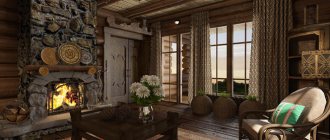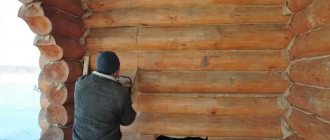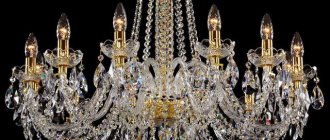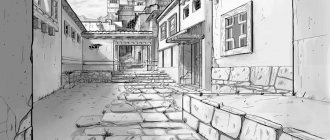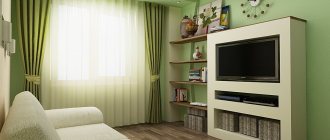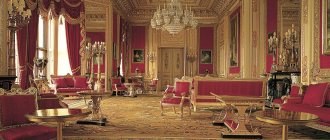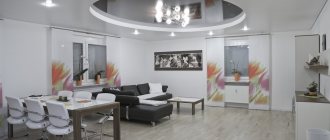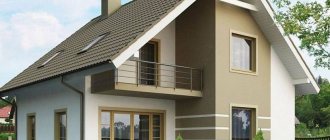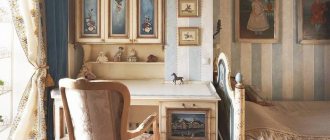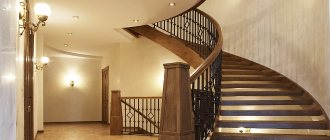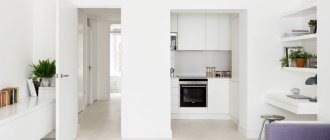8121
From this article you will learn:
- What are the features of indoor and outdoor lighting in a wooden house?
- What are the common mistakes made when installing street lighting?
- What are the rules for installing lighting in a wooden country house?
- What safety rules should be followed when installing and operating lighting in a wooden house?
Wooden houses embody the most common ideas about cozy and comfortable housing in a picturesque location. Walls made of timber or logs look warm and create a pleasant homely atmosphere. To emphasize this image, it is important to carefully consider the lighting in a wooden house. With the help of lamps and other lighting fixtures, you can harmoniously complement the comfort of the interior spaces. At the same time, an unprofessional approach to light can disrupt the interior design concept of a wooden house.
Lighting design in a wooden house
Modern residential interior design includes many new and exciting styles. One of them is minimalism, which involves the strict design of premises using metal elements and glass parts. One of the main features of residential interiors is their fullness of comfort and warmth. These characteristics are ideally matched by a rustic style, in which the key materials are natural - wood, stone, fabric, leather, etc.
Wooden houses are becoming increasingly popular these days. Residential buildings made of logs or timber have an attractive appearance and are perfect for permanent residence and recreation. In a wooden cottage you can completely escape the bustle of the city and immerse yourself in the world of nature. It is important to choose the appropriate lighting correctly.
With an unprofessional approach to interior design, a wooden house can create a depressing impression of a peasant hut with low ceilings. When developing an interior design for such a cottage, you need to pay attention to every element, including furniture, decor, lighting, etc. It is necessary to take into account the features of electrical wiring in a wooden house and choose the right lamps that will be combined with the overall design of the premises. To decorate such a house, you can use lighting fixtures made of ceramics, wood or fabrics. These can be lampshades, built-in lamps, vertical or horizontal bus systems.
The interiors of wooden houses are distinguished by their “warmth”, but when decorating them, it should be taken into account that this material absorbs light. Incorrect placement of lighting fixtures can cause a wooden house to lose its warmth and comfort, plunging into cold twilight.
If there are spacious window openings, during the daytime the rooms of a wooden house will be bright and cozy, but after sunset they can become gray and cold. Well-thought-out artificial lighting will help solve this problem.
Most often, in buildings with beam structures, a general lighting system is designed, which is supplemented by spotlights in individual areas. For example, in the kitchen this way you can highlight areas in the area of the desktop, stove and sink. Built-in lighting elements look advantageous on the stairs and veranda. At the same time, in a wooden house it is not recommended to use lighting devices with halogen lamps, which become very hot and can cause a fire.
With the help of spotlights, you can harmoniously emphasize the beauty of a wooden interior and focus attention on individual decorative elements. To organize lighting in a wooden house with low ceilings, it is worth considering the option of hanging chandeliers that diffuse the light. Special attention should be paid to the safety of electrical wiring and fire safety requirements. Electrical wires in a wooden house must be protected: wood used for the construction of walls and ceiling structures must be treated with compounds that increase its resistance to fire.
Selection of lighting fixtures
Let's consider the sequence of choosing lighting fixtures for an open veranda or terrace. First, decide on the type of light source, choosing between:
- filament lamps;
- halogen lamps;
- housekeepers;
- LEDs.
Today on the market there are no analogues to LED products in terms of service life, environmental friendliness, safety of use, cost-effectiveness and efficiency. At the same time, halogen bulbs are great for illuminating interior items and plants.
Next you need to pay attention to the materials from which the lamp is made. Glass, metal or wood products can be useful for the veranda. You can give preference to more exotic varieties, provided they are protected from temperature changes, precipitation and dust.
As for the design, here you must navigate yourself, depending on the style in which the facade of the house, the porch and the veranda itself are decorated. You should not install high-tech equipment in classic wooden houses, just as you should not install ceiling pendant chandeliers on verandas decorated in a futuristic style.
Power type
Based on the method of power supply, there are two main types of lighting devices. We are talking about devices connected to an industrial AC network with a voltage of 220 V or powered by DC sources (batteries). The latter are considered the safest, but require periodic recharging.
However, in the summer you can limit yourself to solar batteries: their capacity will be enough for continuous operation of the lamps for 6-7 hours. Add motion sensors here, and this charge will be enough for you.
Automatic light
Motion sensors are considered the most popular tool for solving the problem of automation of lighting systems. With their help, you fully automate the lighting. The light will turn on only if the device’s sensor detects fluctuations in the level of the transmitted signal. You can independently adjust the sensitivity of the device so that, for example, it does not respond to the movement of a dog, cat, or bird flying by. In addition to the ease of operation of the lighting system, such sensors will allow you to save energy.
Features of interior lighting in a wooden house
The catalogs of lighting equipment manufacturers present a wide selection of lamps and other devices for lighting a wooden house. With this variety it is easy to choose products for any interior style. The main thing is that the selected devices can provide high-quality lighting of rooms in a wooden house with a low level of natural light. In addition, you need to take into account the decorative role of artificial light. You should pay attention to lamps that are used to illuminate individual areas and contribute to the formation of comfort in living rooms.
When selecting lighting equipment, you should take into account the characteristics of each room (size, ceiling height, wall design, size and number of window openings). It is especially important to correctly calculate the level of lighting in the kitchen in the work area. It is better if the lighting here is close to natural: yellow light will not irritate the eyes and cause fatigue.
Ceiling lighting in a wooden house
The design of ceilings in wooden houses may vary. Today there are quite a lot of design ideas and technologies for decorating ceiling surfaces. Lighting fixtures should be combined with the design and decoration of the ceiling. For example, when designing lighting in a wooden house covered with clapboards, it is illogical to use an overly “pompous” chandelier. Of course, the material for finishing ceilings can be modernized, but often customers want to preserve the original interior of the log house and the natural attractiveness of the natural finish.
Let's consider the advantages that suspended ceilings provide in the context of lighting a wooden house:
- the possibility of using economical spotlights;
- wide choice of design options;
- no need to treat the wooden ceiling before installation;
- the ability to use different types and shapes of lamps;
- visual increase in space;
- the ability to adjust the light brightness level (when installing additional equipment);
- long service life of suspended ceiling systems with built-in lamps;
- easy care.
Staircase lighting in a wooden house
Today, many owners of private houses use smart home technologies to organize the safe and efficient operation of engineering systems. Elements of ensuring the safe operation of a home include staircase lighting. There are different ways to organize intelligent control of staircase lighting. Lighting devices here should be positioned in such a way that there are no shaded areas in the staircase space, which could cause injury to residents. To illuminate stairs in a wooden house, LED, neon and halogen lamps can be used. The choice of certain devices is determined by the material from which the staircase is made and the shape of the flight of stairs.
To illuminate a wooden staircase, it is not recommended to use halogen lamps, as during operation they become very hot and can cause a fire.
Lamps on stairs are most often placed along the length of the steps, at the bottom of the wall, on the side of the flight of stairs, or chandeliers and sconces are used. It is worth paying attention to the color of the lamps. For wooden structures, it is better to use warm yellow light, and for metal stairs, cool white light is suitable.
Recommended reading:
- Options for laminated timber houses for every taste and budget
- Construction technology of a half-timbered house
- Types of foundations for a private house
The lighting of the stairs of a wooden house must be designed taking into account two requirements: all steps must be well illuminated, but at the same time it is necessary that the light does not blind a person. The choice of lighting option is influenced by the configuration of the staircase structure.
- Spiral staircases
- Stairs made of wood and metal
- Stairs with transparent steps
- Concrete stairs
Such designs are distinguished by rounded steps. You can use a spiral staircase to your advantage by using an LED strip. Typically, such structures are small in size, so stair railings and the surface of the side wall are used to place lighting fixtures.
LED lighting can be used for staircase structures that do not have risers. The fact is that the tube with LEDs is mounted from the inside so that the flow of light is directed to the step below. If there are risers, it is worth installing spotlights or using overhead lighting.
Lightweight transparent staircase structures are made of durable glass or acrylic. To organize the illumination of such a design, a screen is placed that diffuses the light. This makes it possible to create a glowing effect on the steps. If you have acrylic handrails, it is worth directing the luminous flux to the end of the handrail (this will create the appearance of a glow from inside the handrail).
It is technically impossible to organize lighting of a concrete structure with LED strip. In this case, the best option would be to place the lamps on the side at a height of 0.4-0.5 meters from the top surface of the steps. If there is sufficient span height, chandeliers can also be used to illuminate the stairs.
Living room lighting and second light in a wooden house
When designing a wooden house, the technique of arranging double-height living rooms is often used. This is the name for high rooms that are always filled with daylight. Such solutions can be used not only in a private house, but also in two-story apartments.
Typically, such living rooms have spacious panoramic windows with beautiful views. A room with a second light can be fenced off from other rooms or located in an open area. At the same time, in the premises of the second floor there may be access to a balcony, which hangs over the living room and also has panoramic view windows.
It is possible to construct double-height living rooms from transparent structures that let in natural light. When using panoramic glazing in such rooms, it is important to ensure high quality installation.
To illuminate the double-height living rooms of a wooden house, large ceiling chandeliers on long chains are used. In addition, table lamps with large lampshades would be appropriate here. Large forms are an effective design option for spacious living rooms with second light.
Lighting in the kitchen in a wooden house
The most visited room in a private home is the kitchen. To highlight and illuminate the work and dining areas, sink and stove, various spotlights are used. At the same time, daylight is needed in the work area, and to illuminate the dining table it is worth using soft light that creates a feeling of comfort. Some options for organizing kitchen lighting are presented in the photo.
Ceiling lights should be approximately 0.7 m below the ceiling surface. This way they will be almost in line with the upper shelves of the furniture. Spotlights can be located under the cornice of the upper cabinets of the kitchen unit. The soft lighting of the drawers and shelves looks original. In this case, it is necessary to place the spotlights in such a way that glare from glossy furniture elements does not blind the eyes of household members.
How to make your own lighting
To install light on your country terrace yourself, you will need:
- tools: hammer, electric drill, tape measure, hole saw, drills (cork and feather), pliers;
- mark the location of the lamps;
- drill sockets for devices;
- in the center of the socket, make a hole for the back of the lighting fixture and stretch hidden wiring to the power supply;
- in the niche made, first fix the block with wires and the lamp, then install the housing;
- pass the wires into the hole in the socket and mount the housing;
- install protective glass;
- connect to the power supply.
There are various ways to bring light to the terrace. The main thing is to decide on the design and type of lamps for installation.
Video: Installing LED lights for a new veranda
Main lighting
The main light is designed to create coziness. It is best created by soft diffused radiation with a comfortable flow of light for the eyes. In most cases, this spectrum passes through the warm yellow region.
The chandelier is a “classic” of this type of lighting. Its dimensions should be compact, as they may impede movement. Most often they are hung above the entrance, table and above the seating area. Spotlights are a very convenient option for open areas. Lamps are selected taking into account the technical requirements and architectural design.
Important! Lighting devices with motion sensors consume electricity extremely economically.
Additional items
If the open area has a complex structure with insufficient light from the main source, it is compensated by installing additional elements.
These include:
- floor lamps;
- Garlands;
- sconces of various types;
- hidden lighting (LED cable or strip);
- wireless lighting.
You can decorate the space using a multi-level arrangement of devices, lampshades of the same color scheme in different shades. This design approach will create a pleasant light for the eyes, not boring, and expressive.
Illumination and decorative light
With the help of lighting, they focus on certain areas and highlight them from the rest in the overall context of the design. For example, flower beds and original interior items. There must be mandatory illumination of reservoirs located close to the veranda for safety purposes in the local area.
Did you know? Energy-saving lamps affect the human psyche, reduce performance, increase fatigue, change biorhythms and hormonal levels. Therefore, it is best to equip the lighting with LED devices.
Decorative light always makes the design of an outdoor area unique. To do this, install garlands, LED strips and colored lights. LED strips are used to decorate or outline the boundaries and shapes of terraces and verandas, and to decorate porch steps and railings. Garlands are hung both for decoration and as auxiliary lighting.
Colored lanterns organically complement different styles of venues.
Examples of interior lighting of a wooden house (photo)
Recommendations for arrangement
At the entrance to the veranda and near the stairs, it is better to place bright lamps. A diode strip can act as an addition. Lamps must be positioned so that the steps do not cast shadows, otherwise you may be injured. Structures should be placed on both sides of the stairs.
Step lighting.
They must be insulated from moisture, especially if the veranda is open. If the building is located separately from the house, it is better to buy 4 floor structures and place them in the corners. Plants respond well to neutral white light, supplied by halogen lamps.
Features of external lighting of a wooden house
Near a private wooden house there is always a yard, for which lighting should also be provided at night. Street light should perform both security and decorative functions. To do this, there is no need to use too bright lamps, since in this case everything that happens in the yard will be clearly visible from the street.
For street lighting of a wooden house, lanterns and LED strips are used, which emphasize the beauty of the facade made of logs or beams. To control lighting devices, both regular switches and automatic ones that are activated when darkness sets in, or motion sensors can be used. Using such automation, you can illuminate the entire perimeter of the local area and the recreation area at the right time.
Near a private house there is usually space for a veranda or terrace. At night, you can consider interesting decorative illumination for such objects. To illuminate the open veranda of a wooden house, you will need devices equipped with protection from dust and moisture. These can be sconces, lamps or lanterns, which are mounted on columns and beams.
Thoughtful lighting of the attic floor in a wooden house will create a special coziness in this area. The choice of lighting equipment here is made taking into account the size and shape of the object, as well as the number of window openings.
The most popular options for attic lighting in a wooden house:
- Local lighting devices, the light from which can be directed to individual areas of the room (sconces, floor lamps, table lamps). This solution will allow you to favorably emphasize the features of the attic interior.
- A crystal light diffuser is a device that, alternating light and shadow, allows you to create original decorative effects (falling snow, starry sky, etc.).
- Spotlights are a universal solution for attic lighting, which can be provided both in combination with local lamps and without them.
- LED strip is very popular as an economical decorative lighting for non-standard designer interiors.
- Neon lighting is usually used as a complement to universal lamps and diode strips. In catalogs of electrical products you can choose plain and rainbow neon lighting. It can match the overall interior design or contrast with it.
The same lighting devices can be used to organize the lighting of the second floor of a wooden house. The choice of a particular option depends on the design of the building.
The arrangement of lighting in the attic rooms of wooden houses is somewhat more complicated due to sloping ceilings, sloping walls and other structural features.
To illuminate the yard, you can use solar-powered LED lights and radio-controlled devices. The street staircase from the veranda is usually spotlighted using devices powered by solar energy.
To illuminate the attic and courtyard, you can use several lighting options:
- flood lighting will highlight the beautiful facade of a wooden house;
- accented light will highlight certain architectural and decorative elements;
- contour lighting is used for balconies, railings and roofing;
- hidden lighting allows you to highlight protrusions or recesses of the façade structure, as well as individual fragments of the landscape.
How to choose the right lamp - criteria
When choosing a lamp for a terrace, you must be guided by several criteria, carefully studying the technical and operational characteristics of the proposed devices. Since the devices are intended for outdoor use, it is important to maintain a high level of protection from dust and precipitation, low or, conversely, high temperatures. That is why the protection class of the selected lamp must be at least IP44.
Any lighting device will not function without a light source. When choosing a light bulb, pay attention to parameters such as minimum service life, power, color temperature and price. The most popular lamps for outdoor use are mercury, sodium and metal halide lamps. The first two varieties are used more often, while sodium ones, although more expensive than mercury ones, outperform them in terms of lower electricity consumption and brighter light with identical power. On the other hand, light from sodium sources is in the yellow spectrum, mercury - white.
LED lighting is considered to be the most modern and high-tech. Based on LED diodes, numerous manufacturers from around the world create a variety of products characterized by increased energy-saving properties and unsurpassed levels of illumination. LEDs are reliable, easy to install and, if necessary, easily replaceable devices. The service life of an LED light bulb is at least 15 years. This value varies depending on the frequency of use and duration of continuous operation.
The power of the light bulb should be selected in accordance with the illuminated area, as well as the distance between the seating area and the installed lamps. There are other, less significant factors that you can turn a blind eye to. If you need bright light or have focused on a minimum number of lighting fixtures, then it is recommended to buy powerful light bulbs. On the other hand, it is advisable to give preference to LED products. If we compare them with mercury and sodium devices, then to obtain the same level of illumination, less powerful LED diodes will be required.
Common mistakes when arranging street lighting
To decide how to install outdoor lighting in the courtyard of a wooden house, you should study the main mistakes encountered in the design and installation of lighting fixtures.
- The purpose of the lighting is not defined.
- Excessive lighting.
- Lack of light.
- Inattention to detail.
- Lack of unity of style.
- Wrong choice of flashlight models.
- Purchase of equipment that is difficult to operate.
- Lighting the area without taking into account the view from the windows of the house.
- Inattention to residents of neighboring houses.
- Violation of safety rules.
Landscape design requires an integrated approach to the design of the site. The result of a well-designed design project can be enjoyed for many years. But first of all, you need to clearly describe the problem that the landscape design should solve. It happens that the owners of a wooden house, without the appropriate knowledge, try to impose their decisions on specialists. This may lead to undesirable results. We recommend that you still listen to the advice of a landscape designer.
One of the mistakes when designing street lighting is the desire to turn night into day. There is no need to place lanterns and lamps throughout the area. Street lighting should remain precisely the lighting that is used to emphasize certain elements of the facade or landscape. A properly illuminated area will be especially attractive and enchanting.
The other extreme - lack of lighting - will also be a mistake. It is important to find that middle ground that will allow you to create a cozy and attractive environment on the site near the wooden house. Lighting devices must be located in places where there is a certain danger (near a body of water, on stairs, on paths where there is a difference in height).
When it comes to lighting the area around a wooden house, every detail should be taken into account. It is necessary to maintain harmony of shades, shapes, dimensions and textures. For example, chrome-plated fittings of street lamps should be supplemented with appropriate details and architectural elements (design of benches, door handles, figurines, etc.).
A mistake would be a discrepancy between the style directions used to decorate a wooden house and the surrounding area. All lighting elements must fit harmoniously into the overall design concept.
When choosing street lamps, it is necessary to take into account such parameters as dimensions (height, base diameter and dimensions) and functionality (the required number of bulbs and their parameters). The characteristics of lighting devices must be compared with the height of the trees, the permissible power supply on the site, the characteristics of the objects that the lantern illuminates, and other details. This approach will help you avoid expenses and prevent possible mistakes.
Such errors have much in common with the previous point. But there are also some peculiarities here. It is necessary not only to analyze the technical characteristics of lighting devices, but also to imagine how convenient this or that model will be in everyday use. It is necessary to take into account the complexity of the process of replacing light bulbs, cleaning fixtures, washing the lampshade, etc.
Site design experts note that most often homeowners will see elements of street lighting from the windows of their homes. It is important that this picture is enjoyable.
When designing lighting for an area near a wooden house, you need to think about the comfort of those living next door. It should be taken into account that lanterns in the local area can illuminate neighbors’ areas and shine into their windows. It is necessary to take into account the illumination radius of the lamps used.
It is important to strictly follow the rules for installing electrical equipment. When laying cables, it is necessary to take into account the negative impact on it from the soil and natural factors. It is necessary to take into account temperature changes, condensation, soil freezing depth and other factors.
Rational lighting of small architectural forms
There are many options for lighting gazebos, and, most often, work on the electrification of these buildings is carried out independently, taking into account the design of the main buildings and other design elements of the site.
However, the main task of installing light sources on terraces, verandas or gazebos is to create comfortable conditions for relaxation and safe movement along the steps, which often lead to an open terrace or veranda attached to the house.
Basic lighting in the gazebo
The main lighting of the gazebo will help to optimally open up the space of the structure in the evening, at the same time, contribute to the creation of a romantic atmosphere, emphasizing the charm of a warm summer evening.
Therefore, lamps for a gazebo should not emit a bright, harsh light, and experts recommend using sources for these purposes that will illuminate the resting place with a soft, diffused light flux.
For a small building, a lamp with a power of 75 W is sufficient; the installation of a chandelier in the gazebo can be done with your own hands, taking into account the operating characteristics of the lighting device.
Features of choosing lighting fixtures
When choosing lamps for gazebos in shopping centers, you should take into account the technical characteristics of the purchased device, since such devices must work properly outdoors.
Lighting fixtures for gazebos are made from various materials:
- natural wood;
- glass;
- metal with elements of artistic forging,
which allows you to choose a practical, functional and original model.
Having shown his creative inclinations and imagination, the owner of the site is able to create an unusual version of the chandelier for the gazebo with his own hands, using available materials for these purposes. However, do not forget about the safety of using such electrical devices.
Local lighting in the gazebo
In addition, lamps can be placed in the gazebo to illuminate the workplace, which will allow you to comfortably do needlework or read a book.
Typically, to create local lighting, wall or mobile directional light sources are used, which are installed to the left of the table, creating comfortable areas for working or reading.
The small dimensions and direction of the light flux will help to use several lighting devices simultaneously, using several lighting modes:
- brighter, which is necessary for reading or knitting;
- calm, created by light sources of lower power.
Modern lighting fixtures are often equipped with special regulators that allow you to adjust the power of the luminous flux, depending on certain tasks, so it is absolutely not necessary to purchase several models of lamps if the idea of designing a gazebo, terrace or veranda does not require it.
Examples of street lighting for a wooden house (photo)
Norms and requirements
When providing outdoor lighting on a terrace, it is important to consider the effects of moisture arising from precipitation or temperature changes, the build-up of dust and the influence of direct sunlight.
- In accordance with clause 6.3.1 of the PUE, external lighting on the terrace can be provided by lamps of any type.
- According to the requirements of clause 6.3.40 of the PUE, if there are 20 or more lamps on one line, it is recommended to provide them with separate circuit breakers or fuses.
- In relation to the ground level, according to clause 6.3.6 of the PUE, lighting devices can be installed at any approach to the ground. But if you install them in niches or pits, then the installation sites must be equipped with drainage.
- If you install lighting below 2.5 m from the floor, then, based on clause 6.1.15 of the PUE, the degree of protection of the lamp must be at least IP54.
- After installation in accordance with clause 6.6.8 of the PUE, the lighting equipment must be securely fixed at the mounting points.
- The location of the terrace lighting in accordance with clause 6.6.1 of the PUE is selected in such a way that it is always freely accessible.
- When placing pendant lamps in accordance with clause 6.6.4 of the PUE , the suspension height is selected to be no more than 1.5 m. If this requirement is not met, install devices to prevent swinging of lighting devices.
In addition, note that insects in the dark can be a real punishment on the summer veranda. Therefore, all terrace lighting devices must be located at some distance from sofas, chairs and tables.
Rules for installing lighting in a wooden country house
Installation of electrical equipment and wiring of electricity in a wooden house is a responsible task that must be performed by qualified specialists. Installation errors can lead to dire consequences. In wooden houses, electrical wiring is laid openly and secured using porcelain insulators.
Designing lighting in a wooden house made of timber or logs must be carried out taking into account the shrinkage of the building. All wires must be protected with non-flammable insulating material. A grounding system must be provided. Electrical wiring in a wooden house cannot be carried out directly on wood, in corrugation or in plastic. If a fire occurs inside a wooden wall due to a short circuit, it will be very difficult to extinguish it.
To lay wires in a wooden house, you need to use steel or copper ducts. It is necessary to provide an electrical panel in which circuit breakers will be located. It is not recommended to organize lighting in a wooden house (made of logs, timber, clapboard) using halogen lamps. It is necessary to carefully consider the installation points of switches, taking into account their height, which should be convenient for all family members.
Electrical wiring in a wooden house can be done in three ways:
- External installation is the most economical and safe option for electrifying a wooden house. With this method, electrical wiring runs along the surface of the ceiling and walls using the necessary insulators. This option is practical, but may not be possible with complex connections.
- Wiring using cable ducts. This method is a variation of the previous option. Cable channels should be attached to the wall every 50 cm. The most convenient box for laying wires is an electric baseboard. The use of convenient fasteners will allow you to quickly connect lighting fixtures in a wooden house.
- Hidden wiring is the most difficult method. In this case, planning should be carried out during the first stages of construction. It is necessary to lay metal pipes in the walls (it is better if they are made of copper). Such wiring is labor-intensive and requires large financial costs. There will be electrical wires inside the pipes, which will eliminate any pressure on them (this is especially important given the shrinkage of a wooden house).
If a wooden house will use lamps with a power of no more than 15 kW, then you can do without a transformer. To measure this indicator, you must turn on all electrical appliances. It is necessary to divide consumption devices into groups. The category with the most powerful consumers (boilers, ovens, boilers) should be placed on a separate branch and connected through a separate machine.
To form an electrical network in a wooden house, cables of the NYM and VVGng types should be used. The first type is a power cable that meets the requirements of European standards. It can be used for networks with operating voltages up to 660 V. The VVG cable type is a bare power cable with vinyl insulation. It is designed for networks with voltages up to 1 kV. It is also necessary to determine the required cable cross-section. This parameter can be clarified by studying the markings on the cable braid. The first digital character of the brand indicates the total number of wires. The second number shows the cross-sectional area of the wire in square millimeters (for example, 3 × 1.5).
The necessary data for calculating the minimum cross-section of an electrical cable for wiring in a wooden house can be found in special tables (such data are available on specialized Internet sites). To connect sockets, copper cables with three cores of 2.5–4 mm are used. The lamps can be connected with a cable with a cross-section of 1.5 to 2.5 mm. Experts do not recommend using aluminum wiring: aluminum heats up more than copper, which can lead to a fire in a wooden house. In addition to electrical wires, you need to select RCDs (residual current devices) and automation based on the calculated voltage in the network.
Single-phase power network
In private wooden houses, single-phase electrical networks with a voltage of 220 V and a current frequency of 50 Hz are often used. For such networks, three-core cables with grounding or two-core cables without grounding are used. The power cable for connecting a wooden house goes from the local substation to the house distribution panel.
The selection of equipment for lighting a wooden house and surrounding area occurs on an individual basis. As a rule, chandeliers are hung in rooms and complemented with spotlights, sconces, LED strips, etc. In small non-residential premises there may be no central lamp.
When choosing lighting devices, you need to take into account the required level of illumination. For 5 m2 of area of a wooden house there should be about 100 W of light power, if you calculate the lighting of standard incandescent lamps. In addition to more affordable standard light bulbs, you can use fluorescent and LED lamps (their high cost is justified by economical energy consumption and long service life).
External lighting of a wooden house and lighting of detached buildings on the site must also be carried out from a separate power supply point, taking into account certain rules.
General requirements for organizing lighting of the territory and individual buildings:
- electrical wiring must be located strictly horizontally or vertically;
- all turns when laying the electrical cable must be made only at right angles;
- sockets and switches should be placed in places convenient for use;
- switches should be located no higher than 1.5 m from the floor (wires to switches are supplied from above);
- sockets in a wooden house should be installed at a distance of 0.8 m from the floor (in this case, one socket should be provided for every 6 m2 of area);
- electrical wiring cannot pass at a distance of less than 10 cm from door and window openings.
Veranda lighting options
Lighting is created not only inside the terrace, but also in the area of railings and stairs. These exterior details are often decorated with LED strips. The structures do not require complex installation and are inexpensive. Universal LED strips are used to decorate stairs. Buyers note that they are practical, durable, and airtight.
The structures are used to illuminate open and closed verandas. You can create uninterrupted lighting. Some owners of private houses create lighting for the steps. The devices are placed in profiles or at the base of the railing. Linear and point designs look good, with lamps mounted in steps or in the floor.
Small halogen devices are installed around the perimeter. For a classic or vintage interior, choose devices that provide soft light. The choice of device should depend on the characteristics of the room.
Lamps made in the following styles are in demand:
- high tech;
- grunge;
- futurism.
The devices differ in the body material (plastic, wood, glass). If there are columns in the room, you can install sconces on them. A loft-style veranda will be complemented by appliances located in the area of the canopy or beams.
You can place spotlights on the ceiling (they are suitable for different interiors). To illuminate the veranda, sealed lamps with shades can be used. Beams are often decorated with garlands and small spotlights with halogen lamps.
The lampshades go well with diode strip. If there are many plants in the extension, it is recommended to install diode or halogen lamps that provide diffused light. The devices will highlight the beauty of flowers and add mystery to them. To illuminate the closed terrace of a wooden house, high-strength devices are used; they are chosen taking into account the style of the interior.
Spot lamps are placed on walls and ceilings. The designs are universal; they decorate the room without distracting the eye from other details. Halogen lamps last a long time and consume little electricity. Often two types of lighting are created: the main lamps are placed at the top, and additional (muffled) lamps are placed on the walls.
Examples of lighting in a wooden house with beams (photo)
Daylight
To increase natural light, various techniques are often used, for example, using “second light” or panoramic glazing in a house made of timber. Such methods have both pros and cons. On the plus side, you get a beautiful view from the window, a large amount of light and space, lightness and freedom, but at the same time, such structures need to be additionally insulated, or the heating system must be carefully thought out, since heat loss in such cases is about 20%, but for For many, the pros outweigh the possible cons. Also, at IC DomoCenter, for an additional fee, it is possible to install additional windows in the house, which will also increase its illumination.
General recommendations
When working on lighting a terrace in a house, many questions arise. This is due to the fact that the veranda is an open structure.
The main task of lighting on the veranda is to create a comfortable environment. Lights should also illuminate the staircase so that guests can navigate the steps safely.
The veranda needs soft light
It is better to prefer devices that emit a soft, muted stream of light. If the veranda has small dimensions, then 75 W lamps are suitable, and you can install the lighting equipment yourself.
